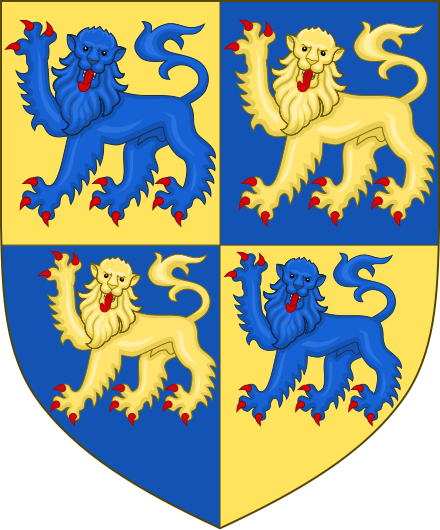Dafydd ap Gruffydd was Prince of Wales for less than a year before he was executed by King Edward I of England. What events led up to this, and how was his execution carried out?
The Conquest of Wales
Following the defection of Gruffydd ap Gwenwynwyn and Dafydd ap Gruffydd to England in 1274, relations between Wales and England began to sour. Over the next three years, Llywelyn ap Gruffudd (Prince of Wales at the time) made several political moves that Edward I took offense to. One such move was his proposal of marriage to Eleanor de Montfort, an English noblewoman who was the daughter of Simon de Montfort, a man that had led a rebellion against the Crown during Edward’s father’s rule. A year later, Edward declared war against Llywelyn with the aim of putting the vassal, and its leader, back in its place.
The invasion of Wales began in 1277, with troops meeting little resistance from many of the rulers throughout Wales, who had grown tired of Llywelyn’s rule. These rulers surrendered to the English army and joined its ranks. In the following months, the army marched through areas of Northern Wales controlled by Llywelyn, damaging towns and positions as punitive measures against the vassal. Peace came in November of that year with the Treaty of Aberconwy, which ceded much of the territory to the English Crown and split the rest between Llywelyn and Dafydd. This peace only lasted a short while, however, as Dafydd began a rebellion in 1282.
The Rebellion and Its Aftermath
Discontent with the territory afforded to him by the treaty, Dafydd began a rebellion with other leaders in Wales, intending to take back much of the territory that had been ceded to the Crown. Soon after the rebellion began, Dafydd’s brother Llywelyn joined him in the struggle, and their union garnered support from many of the Welsh people. Despite the rebellion enjoying initial success in the war, the tides turned after Llywelyn and his army were destroyed in the Battle of Orewin Bridge. The English soon marched into the heart of Wales, capturing Dolwyddelan Castle, one of the major centers of the rebellion. Daffyd, as the last remaining Prince of Wales, fled and remained in hiding until his capture in June of 1283.
The Capture and Execution of Daffyd
Daffyd and his son Owain hid themselves away at Nanhysglain, in a bog nearest to Bera Mountain. There, they were captured by English troops and sent to Shrewsbury. Once there, a parliament was summoned and condemned Dafydd to death. The charge was high treason against the king, and the method chosen was for him to be hanged, drawn, and quartered. He was drawn through the streets attached to a horse’s tail, hung alive, and disemboweled. After death, his body was cut into four quarters. His executioner was paid 20 shillings for the act.

